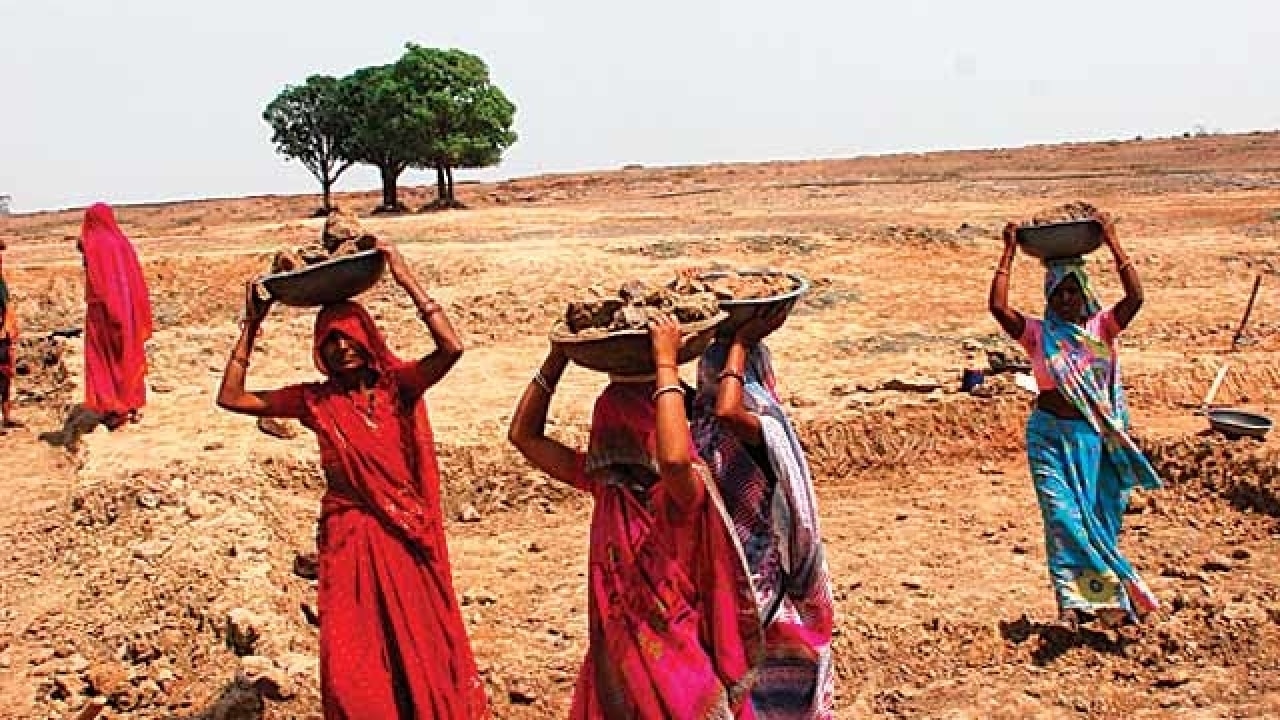
The change in the Mahatma Gandhi National Rural Employment Guarantee Act’s (MGNREGA) fortunes is evident in the improved performance of the scheme in the past financial year and the positive outlook of the government. Once termed by the BJP as a “living monument” of the UPA government’s failures, the two successive years of drought have changed the perceptions about the scheme’s utility. After offering just 45.98 average person days of employment per household in 2013-14 and 40.17 in 2014-15, the government has succeeded in providing 49 person days of employment in 2015-16. The expenditure of Rs42,848 crore in FY 15-16 is also the highest since inception although there is criticism that when adjusted for inflation, the expenditure pales before the Rs.39,000 crore allocation, back in 2010-11.
The rural development ministry’s Performance, Initiatives and Strategies (FY 15-16, FY 17-17) report offers effusive praise, noting that the scheme has succeeded in providing employment to vulnerable sections like women, Dalits and Adivasis. The report also praises the deployment of an elaborate human resources architecture comprising rozgar sevaks, data entry operators, block and district coordinator, and social auditors. More importantly, the report notes that nearly 10 crore rural households have entered the financial inclusion network, thanks to MGNREGA. The report admits that where the scheme has been implemented properly, it has helped prevent distress migration in drought-hit areas and provided a safety net. For a long time, the MGNREGA was criticised for the failure to create durable assets in rural areas. But the focus on asset creation seems to be yielding results. A total of 8.17 lakh works in areas like water conservation, watershed management, irrigation, rejuvenating traditional water bodies, afforestation and land development has created an irrigation potential of 44.85 lakh hectares. The report also claims that 33 lakh households benefited through NREGA works like improving productivity of lands and development of fallow lands, construction of houses, and promotion of livestock and fisheries.
However, the limitation of the NREGA are also exposed by the report. It reveals that only 5.8 per cent of households could be provided employment over 100 days in areas where drought was notified. The report admits to poor planning by gram panchayats, delays in wage payments, fund constraints, questions about the quality, durability and usefulness of the assets, and lack of outcome-based monitoring. However, there is quantification of the percentage of wages disbursed belatedly though media reports indicate that this problem has greatly hurt the credibility of the MGNREGA across the country. The ongoing process of facilitating electronic wage payments through Aadhaar seeding of bank accounts could have helped address complaints of delayed payments and fake muster rolls but it is making slow progress. Though the Centre has set a July-end deadline for rolling out the Aadhaar-based Payment Bridge, states have failed to get authorisation from workers for the new system. Some of the major states like Uttar Pradesh, Bihar, West Bengal and Gujarat have signed up less than 10 per cent of all registered households for Aadhaar-based payments.
With the focus shifting towards creation of durable assets, perceptions that MGNREGA is just a subsidy in the guise of underemployment is changing. The initiation of geo-tagging of assets through photographs uploaded by rozgar sewaks or junior engineers using a mobile app created by the remote sensing arm of the ISRO is a key initiative. However, the Centre will have to invest more manpower in improving outcome-based monitoring to take advantage of geo-tagging. The Centre’s attempts to reform the MGNREGA administration is praiseworthy. But unless more works are sanctioned, minimum wages are increased, and wage payments made fortnightly as is routinely promised, no amount of administrative reforms will help increase incomes for poorest sections.